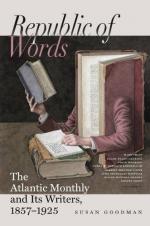In the old cable the copper wire was covered but three times with gutta-percha, while in the new it is covered four times with the purest gutta-percha and four times with Chatterton’s patent compound, by which the cable is rendered absolutely impenetrable to water. The old cable was covered with eighteen strands of small iron wire, which, as they had no other covering, were directly exposed to the action of the water. The new is covered with thirteen strands, each strand consisting of three wires of the best quality, and covered with gutta-percha, to render it indestructible in salt water. By this new construction, it has double the strength of the old cable, at the same time that it is lighter in the water, a very important matter in laying it across the ocean.
The risk of loss in laying the new cable would be very much diminished by the fact that it would be of such strength, that, even if broken, it could be recovered, as has been done in the Mediterranean; and besides, the principal and most expensive materials, copper and gutta-percha, being indestructible, would have at all times a market value.
Other routes to Europe have been proposed, and have been at times quite popular, the most feasible of which are those via Behring’s Straits, or the Aleutian Islands, and via Labrador, Greenland, Iceland, and the Faroe Isles.
To the route via Behring’s Straits there are several grave objections. The distance from New York to London by a route crossing the three continents of America, Asia, and Europe, is about eighteen thousand miles, or more than nine times as great as that from Newfoundland to Ireland. Of course, the mere cost of constructing a continuous telegraph three-quarters of the distance around the globe, and of maintaining the hundreds of stations that would be necessary over such a length of land-lines, would be enormous. But even that is not the chief difficulty. A line which should traverse the whole breadth of Siberia would encounter wellnigh insuperable obstacles in the country itself, as it would have to pass over mountains and across deserts; while, as it turned north to Kamtschatka, it would come into a region of frightful cold, where winter reigns the greater part of the year. Of this whole country a large part is not only utterly uncivilized, but uninhabited, and portions which are occupied are held by savage and warlike tribes.




